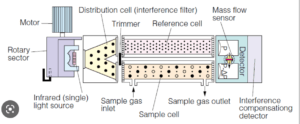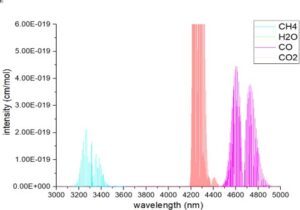Main Menu
LEA300 series gas analyzer is an infrared gas analyzer independently developed by our company for environmental monitoring and industrial site emission gas analysis. The analyzer mainly measures CO, CO2, CH4 ,N2O and O2 gas concentrations, and has the characteristics of high measurement accuracy, high stability and reliability and fast response time.
IR-GAS-600 this model high-stability infrared detectors for simultaneously measuring CO, CO2, and CH4. H2 always reads correctly, independent of the background gas composition. An optional non-depleting paramagnetic sensor can be used to conduct O2 analysis. All sensors/detectors are temperature-controlled or temperature-compensated for maximum analytical stability.
Both types of analyzers are available with analysis of:
☑ Measure COppm+CO2+CH4ppm+N2Oppm in the one unit
☑ Measure CO%+CO%+CO2%+CH4%+CnHm% in the one unit


IR-GFC-600 series suitable for environmental monitoring and industrial site emission gas analysis
| Item | Specifications |
| CO range(NDIR) | (0~100)mg/m3 |
| CO2 range(NDIR) | (0~25)% |
| CH4range(NDIR) | (0~500)mg/m3 |
| N2O range(NDIR) | (0~100)mg/m3 |
| O2range(ECD) | (0~25)% |
| Stability | Less than 2% |
| Max Flow Rate | 2L/min |
| Zero Drift | ±2%F.S.(24 hour) |
| Span Drift | ±2%F.S.(24 hour) |
IR-GAS-600 series suitable for process gas analysis
| INFRARED NDIR DETECTOR | |||||
| GAS | Lowest Range | Highest Range | LR resolution | HR resolution | Accuracy FS |
| CO | 0-5% | 0-100% | 0,001 % | 0,01 % | ≤ ±2% |
| CO2 | 0-5% | 0-100% | 0,001 % | 0,01 % | ≤ ±2% |
| CH4 | 0-5% | 0-100% | 0,001 % | 0,01 % | ≤ ±2% |
| CnHm | 0-10% | 0,001 % | 0,01 % | ≤ ±2% | |
| THERMAL CONDUCTIVITY DETECTOR (TCD) | |||||
| H2 | 0-20% | 0-100% | 0,01% | 0,01% | ≤ ±3% |
| ELECTROCHEMICAL DETECTOR (ECD) | |||||
| O2 | 0-25% | 0,01 % | 0,01 % | ≤ ±3% | |
CO, CO2, CH4, C3H8, and other molecules by heterogeneous atoms in the infrared wavelength region with the absorption spectrum, its absorption intensity follows Lambert – Beer’s Law. When corresponding to a characteristic absorption wavelength of the light waves of gas through the gas is measured, its intensity will be significantly weakened, and the intensity of the gas concentrations in the degree of attenuation related to the relationship between compliance with Lambert-Beer law. The basic principle of NDIR sensor structure, shown below,
Measuring carbon dioxide (CO2) is important for understanding the role it plays in the environment and its effect on climate change. CO2 is a major component of Earth’s atmosphere, and it traps heat like a blanket, causing global temperatures to rise. Too m uch CO2 can lead to drastic changes in our weather patterns and ecosystems, so monitoring its levels is essential for predicting future climate conditions. Additionally, measuring CO2 can help us better understand our impact on the environment and make informed decisions about how to reduce emissions and slow down down down down down global warming. By analyzing CO2 data over time, we can develop strategies to mitigate the effects of climate change and ensure a sustainable future.
Before industrialization, the global average annual atmospheric carbon dioxide concentration was 278ppm (1ppm is one part per million). In 2012, the global annual average atmospheric carbon dioxide concentration was 393.1ppm. By April 2014 , the monthly average carbon dioxide concentration in the northern hemisphere atmosphere exceeded 400ppm for the first time. . 2. Global climate warming, the continuous aggravation of the atmospheric greenhouse effect leads to global climate warming, resulting in a series of global climate problems that cannot be predicted by today’s science. According to the International Climate Change Economics Report, if human beings maintain the current way of life, by 2100, there will be a 50% chance that the global average temperature will rise by 4°C.
Copyright © 2023 esegas.com, All rights reserved.


We will contact you within 1 working day, please pay attention to the email with the suffix “[email protected]”.
We’ll send you the catalog as soon as you submit your email